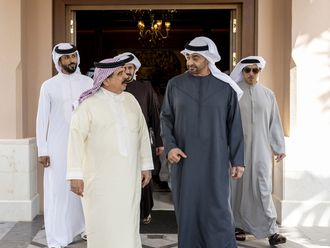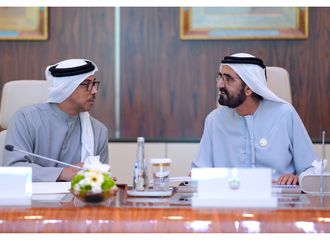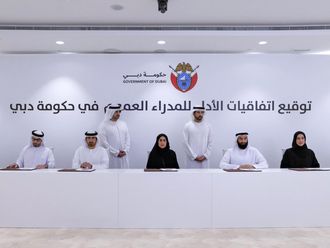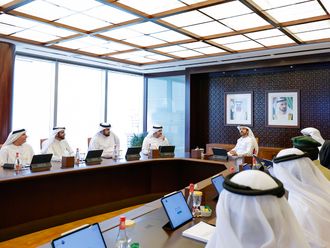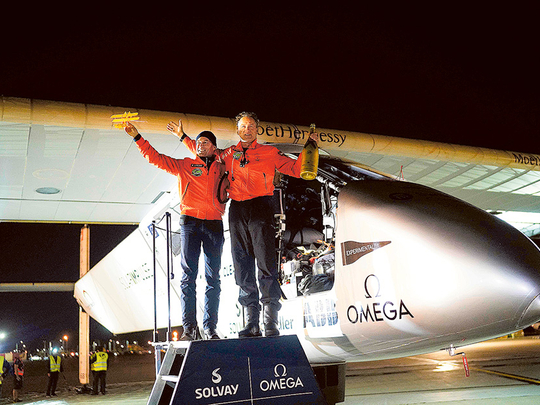
Abu Dhabi: The solar-powered plane, Solar Impulse 2, has landed in the US state of Ohio, following the 12th stage of its circumnavigation of the globe. The zero-fuel aircraft arrived in Dayton at 2156 local time having flown from Tulsa, Oklahoma.
According to a report on the BBC news website, the 1,100km journey took pilot Andre Borschberg about 16 hours to complete, a relatively short hop for the plane. Solar Impulse is aiming to get to New York in the next couple of weeks before it crosses the Atlantic on the last big leg in its global endeavour.
To complete the circumnavigation, the aeroplane needs to get back to Abu Dhabi in the UAE where the amazing journey began March 9 last year, and where the Solar Impulse team was hosted by Masdar and Abu Dhabi for testing, training, and community engagement ahead of the first solar-powered flight around the world.
Masdar, Abu Dhabi’s renewable energy company and host partner of Solar Impulse, is the ideal partner for this epic technological feat, as both Solar Impulse and Masdar are committed to advancing clean technology and encouraging innovation to ensure a sustainable, cleaner future.
The company is a leader in developing some of the most sophisticated renewable energy projects in the world. As such, it is fitting that Masdar hosts such a bold and daring initiative that demonstrates how technology and a pioneering spirit can change the world.
With innovation, sustainability, and leveraging human capital as cornerstones of the UAE’s economic development plans, initiatives like Masdar were established and have enabled Abu Dhabi to evolve into a global hub for clean technology, renewable energy, and sustainable development. As a global symbol for its commitment to a sustainable, diversified energy mix, Abu Dhabi stands out as the best and most suitable departure point for the round-the-world tour.
As well as setting new aviation milestones, the declared purpose of the project is to demonstrate the capability of clean technologies and their potential for the future. The plane gets all its energy from the sun, captured by 17,000 photovoltaic cells on its top surfaces. These power the craft’s propellers during the day but also charge batteries that the vehicle’s motors can then call on during the night.
The craft is wider than a 747 jumbo jet but weighs just 2.3 tonnes. Its low flight speed means that mission legs can take several days and nights of continuous flight and the pilot is permitted only catnaps of up to 20 minutes, while the cockpit is little bigger than a public telephone box.
Meanwhile, according to a flight log recorded on the mission’s own website, while on his way to Dayton, Ohio, hometown of flight pioneers Wilbur and Orville Wright, the pilot on this leg, Andre Borschberg, paid tribute to their adventurous spirit, 113 years after the two brothers succeeded in flying the first power-driven aircraft which was heavier than air.
Borschberg said, “To develop their wing wrapping concept, the two inventors used their intuition and observation of nature to think out of the box. They defied current knowledge at a time where all experts said it would be impossible. When in 1903, their achievement marked the beginning of modern aviation, they did not suspect that a century later, two pioneers would follow in their footsteps, rejecting all dogmas to fly an aeroplane around the world without a drop of fuel. This flight reunites explorers who defied the impossible to give the world hope, audacious men who believed in their dream enough to make it a reality.”
Stephen and Amanda Wright from the Wright Brothers family were at Dayton airport to welcome the two Si2 pilots, along with other well-wishers.



